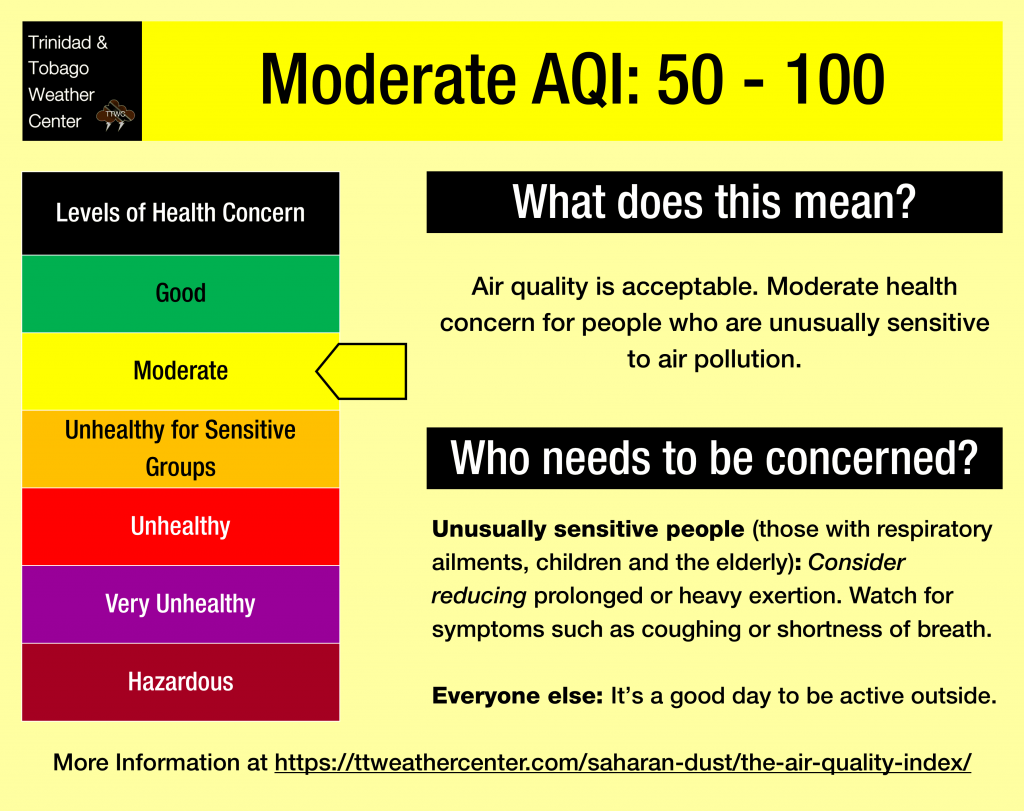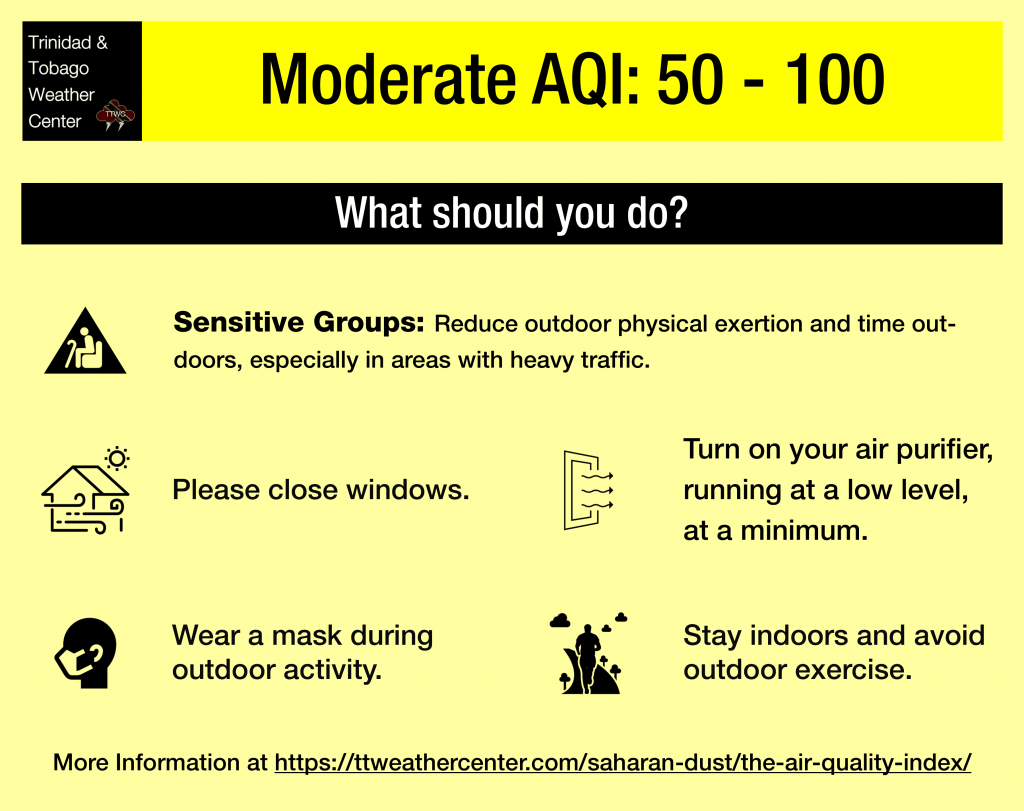Saharan Dust levels continue to remain high north of T&T and across much of the Atlantic. While dust levels are forecast to remain elevated across the country through the end of the month, some rainfall this week will lead to marginal improvement in air quality.
What you need to know
— Saharan Dust Surges: Now through Wednesday afternoon, mild to moderate dust levels are forecast, with moderate to high dust levels from Wednesday night through the end of the month across T&T, with higher dust levels north of T&T
— Impacts: Air quality is forecast to remain good to moderate throughout the forecast period.
— What Should You Do: In times of unhealthy air quality, everyone should take the necessary precautions. Throughout the forecast period, sensitive groups are advised to take the necessary precautions, particularly during high traffic and in the vicinity of fires.
Current AQI Levels Across T&T
As of 3:00 PM Monday, July 22nd, 2024, the official air quality monitoring stations from the Environmental Management Agency (EMA) at Arima, Point Lisas, Signal Hill, and Toco all report moderate air quality, while Mayaro and Beetham are not currently transmitting PM2.5 or PM10 data.
Unofficial air quality monitoring stations at Longdenville, St. Augustine, and Woodbrook are reporting good air quality.
These measurements are based on PM2.5 (particulates the size of 2.5 micrometers and smaller, usually associated with increases in Saharan Dust, vehicle exhaust, and smoke) and PM10 particulates.
Over the last 24 hours, visibility has remained at 10 kilometers at the A.N.R. Robinson International Airport at Crown Point, Tobago, while at the Piarco International Airport, Trinidad, outside of rainfall activity, visibility has ranged between six and eight kilometers.
Saharan Dust Forecast For T&T

Across the remainder of the Atlantic, Saharan Dust levels remain well above normal for this time of year as we move past the climatological peak for dust east of T&T.
The ongoing outbreak has at least temporarily turned off the tropics and has likely contributed to some cooling of Atlantic waters – especially closer to Africa. The dry, dust-laden air from the deserts of North Africa usually peaks in late June and July and is an anticipated part of the seasonal cycle. In 2023, Saharan dust was largely a no-show, with the lowest coverage of dust over the tropical Atlantic in at least 20 years (since satellites began measuring dust).
This week, a low-level trough on Tuesday, the Intertropical Convergence Zone, and Tropical Wave 24 on Wednesday night into Thursday is forecast to limit high dust levels across the country. As a high-pressure system rebuilds across T&T in Tropical Wave 24’s wake, Saharan Dust is forecast to return at higher concentrations.

Monday (July 22nd) through Wednesday (July 24th): Generally mild to moderate concentrations of Saharan Dust across both islands, with generally good to moderate air quality.
Wednesday (July 24th) through Sunday (July 28th): Generally moderate to high concentrations of Saharan Dust across T&T and the Lesser Antilles, with higher dust levels north of T&T. Air quality levels generally at moderate levels.
Sunday (July 28th) through Thursday (August 1st): Mild to moderate concentrations of Saharan Dust across T&T, with generally good to moderate air quality.
What does this mean for you?
Elevated concentrations of Saharan Dust periodically over the next seven to ten days are likely to bring air quality to moderate levels, chiefly affecting the most sensitive groups of the population. The general public is not required to take action.


We’re in a period where the Intertropical Convergence Zone, tropical waves, and occasional tropical cyclones may shield Trinidad and Tobago from the Saharan Dust events. While tropical waves are notable in moving dust across the Atlantic and the Eastern Caribbean, these periodic tropical waves also improve air quality.
The concentration of the dust that follows the wave depends on its strength as it moves off the West African Coast. This is because of stronger thunderstorms across Central Africa. As strong winds move downward and outward from these thunderstorms, the wind kicks up dust as it moves across parts of the Saharan Desert and transports it into the upper atmosphere. This “plume” of dust follows the axis of the wave as it progresses westward into the Atlantic.
Dust that makes it into the upper levels of the atmosphere can then get transported across the Atlantic Ocean. The plumes of dust eventually affect the Eastern Caribbean.
Larger, more concentrated plumes of Saharan dust begin in April and continue through November.











